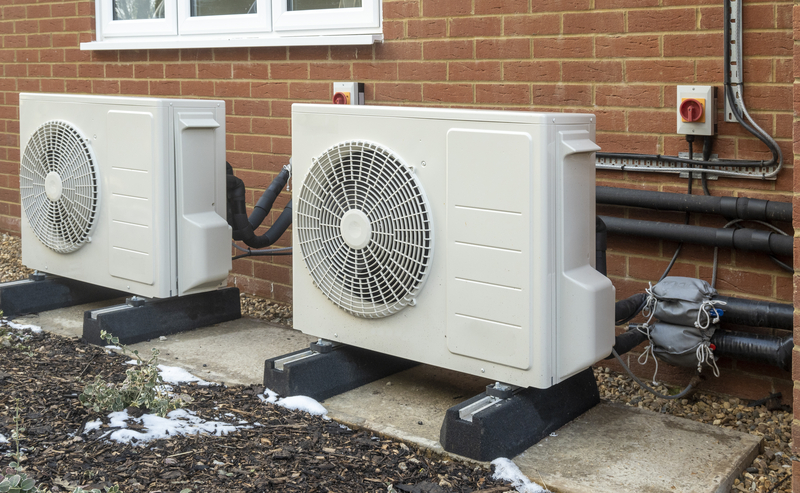
As the government’s Future Homes Standards nears, Phil Hurley explains what different types are on offer and some of the considerations that need to be made when installing them in new-build housing.
Getting to grips with low-carbon heating solutions like heat pumps is of huge importance to housebuilders, with the government’s Future Homes Standard just three years away from implementation.
As housebuilders begin to grapple with the higher standards that new homes will need to comply with from this year and in 2025 as part of the transition away from fossil fuels, the Heat Pump Association (HPA) is working to ensure that knowledge and information around heat pumps is widely shared, leading us to join the Home Builders Federation last March to deliver a webinar focusing on the technology.
As chair of the HPA, I was encouraged by the turnout of 300 housebuilders all eager to find out more, demonstrating the growing interest in heat pumps and the benefits they can bring to future developments.
Here are some of the key takeaways from the online discussion, inspired by the many questions asked by those who joined us.
The full recording of the virtual event can be found here.
Why Heat Pumps?
Heat pumps offer huge carbon savings and will continue to offer future reductions as the electricity grid continues to decarbonise.
Heat pump deployment is already widespread across many countries in Europe, where carbon savings are being delivered cost effectively using proven technology.
How do they work?
A heat pump is able to harness the natural warmth from the ground, air or water, to provide hot water and heating to homes. Each type of heat pump (air source, ground source, water source, exhaust air and hybrid) works in a slightly different way, with more information on each system highlighted below:
Air source heat pumps
An air source heat pump absorbs low temperature heat from the outside air into a fluid that is then passed through a compressor to increase the temperature and transfer heat and hot water to the home.
The system has various components similar to other types of heat pumps, but it also has a thin evaporator coil to draw ambient latent energy from the air and use it to warm up the refrigerant that sits inside the coil so that it begins to evaporate. This gas then moves through the compressor to increase the temperature, which is released inside the building through air ducts or radiators.
Ground source heat pumps
A ground source heat pump takes low-grade heat from the ground to provide heat and hot water. There are various ways this thermal energy can be collected, with the more common methods including ground collectors, where a pipe is buried horizontally into the ground, and bore holes where pipes are vertically inserted.
“Introducing low-carbon heating into new builds avoids the need for retrofits later, representing a cost-effective opportunity to deploy heat pumps at scale.”
In both cases, a water mix with glycol is then inserted into the pipe and circulated to and from the heat pump, pressurising the system to produce heat and hot water. Once the pipes are in the ground, they have a lifespan of between 50 and 100 years and are largely unaffected by air temperature, providing a stable efficiency all year round.
Exhaust air heat pumps
An exhaust air heat pump essentially reuses the energy from warm indoor air as it passes through a ventilation system to heat, ventilate and supply hot water to the home simply and efficiently. The heat energy is taken from the warmer areas of the home and transferred into the heat pumps’ refrigerated circuit before boiling and evaporating. The refrigerant is then compressed, creating heat that is transferred to the hot water and heating system.
Why new builds?
Introducing low-carbon heating into new builds avoids the need for retrofits later, representing a cost-effective opportunity to deploy heat pumps at scale. In some cases, research by the UK’s Climate Change Committee has also shown heat pumps to be cost-comparable to gas boilers in new builds already. Challenges for deployment for ground source heat pumps are also reduced in new builds due to groundworks already taking place.
Key system considerations
Understanding the use and thermal dynamics of the property is key to designing and specifying a suitable heating system. Some key design points to keep in mind include heat loss and hot water usage, external and internal pipe runs, central heating pipe sizing, placement of hot water cylinders, and consideration for sound and comfort.
Pipework requirements
It is important to ensure that the outdoor unit fits within the setting of the property so that it is considered part of the external design – fitted close to the property to minimise pipe runs, for example. The pipe length from the unit to the water source within the home varies depending on the heat pump, but an 8m heat pump head typically has a pipe run of around 15m-20m.
Appropriate heat emitters
Heat pumps are suited to underfloor heating but also work well with radiators, provided they are appropriately sized to operate at low temperature heating. Proposed changes in regulations mean that newly installed or fully replaced heating systems, including the heating appliance and the emitters, in an existing dwelling should operate at a flow temperature of 55°C or lower.
This may require the need for slightly larger radiators to be installed, for example, and often lowering the flow temperature beyond 55°C in new builds is an easy process that creates even greater heat pump efficiencies for minimal additional costs.
Phil Hurley is chair of the Heat Pump Association.
Comments
Comments are closed.











Good article. May have been beneficial to include efficiency data though…